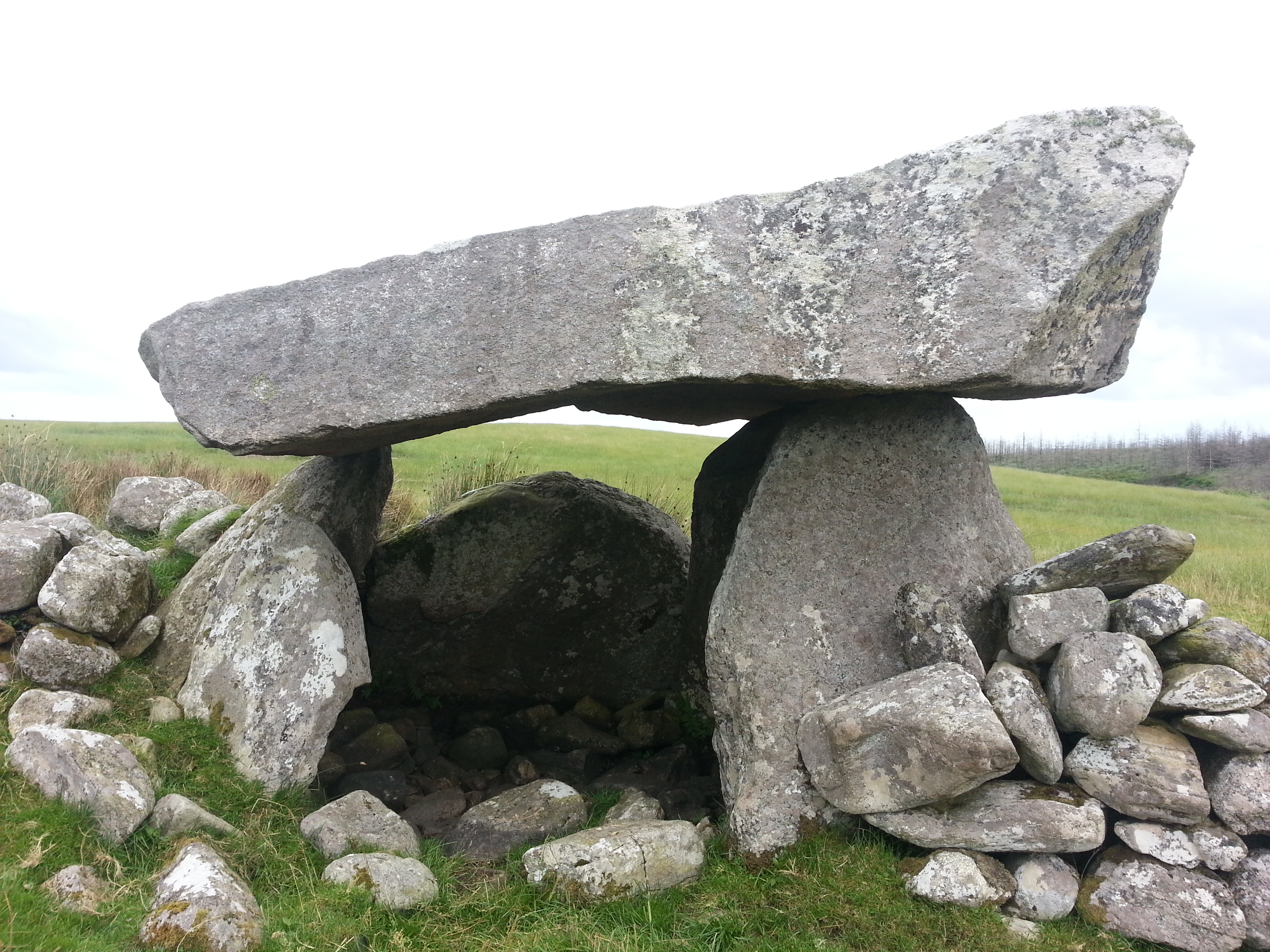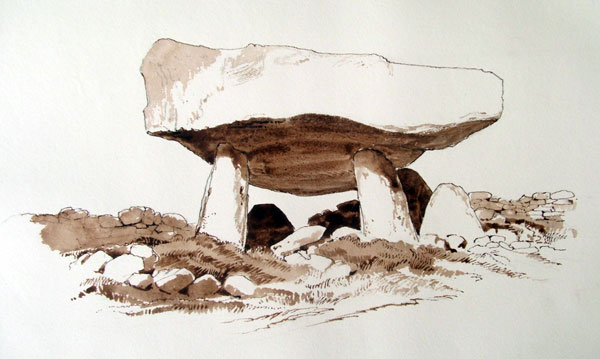The Giant’s Griddle
Information from wonderful website: http://www.carrowkeel.com/sites/sligo/easky.html

The Griddle Stone
The Giant’s Griddle stone is a fine neolithic dolmen near the top of the Easkey river valley. The dolmen is said to have been a cooking site of the Fianna, the band of legendary iron age warriors. It is superbly situated on a rise 100 meters from the river.
There are four huge dolmens in the same rough area of bog in the upper Easkey river valley, all located near fast flowing streams. The Tawnatruffan dolmen or Giant’s Griddle is found near the top of the Easkey river valley. It is one of the most graceful of the Irish dolmens, with a beautiful soaring capstone that looks different from all angles (see a set of photos by Ken Williams). The monument is is hard enough to find, surrounded by forestry, well up the back roads to the mountain, but well worth the effort. Bring OS map 24 with you. The fine capstone is thought to weigh about 15 tons and looks just like a massive slab of meat ready for cooking. Tawnatruffan is sited close to the stream, a perfect location for a portal dolmen.

William Wakemans Illustration 1
William Wakeman’s illustration of the Giant’s Griddle, from the 1870’s. Image copyright Sligo County Library.
The monument was visited by the artists Beranger and Bagari on their 1770’s tour of Connaught. It was a day they would never forget, as described in great detail in their account; they got lost in the fog and were convinced they would die in the bog. The dolmen was sketched by William Wakeman on his tour of the monuments of County Sligo in the late 1870’s. Wakeman is said to have found a horseshoe-shaped engraving on stone near the dolmen. The chamber stone is missing from the west side, but apart from that this megalith is well preserved and worth a visit.

William Wakemans Illustration 2
Another of Wakeman’s paintings. Image copyright Sligo County Library.
The monument was visited by the artists Beranger and Bagari on their 1770’s tour of Connaught. It was a day they would never forget, as described in great detail in their account; they got lost in the fog and were convinced they would die in the bog. The dolmen was sketched by William Wakeman on his tour of the monuments of County Sligo in the late 1870’s. Wakeman is said to have found a horseshoe-shaped engraving on stone near the dolmen. The chamber stone is missing from the west side, but apart from that this megalith is well preserved and worth a visit.
